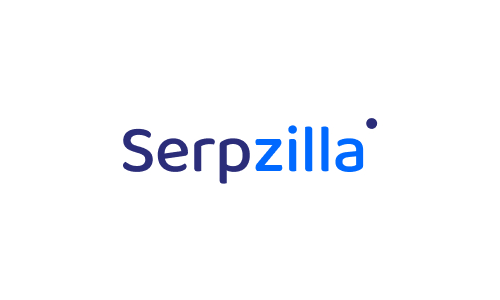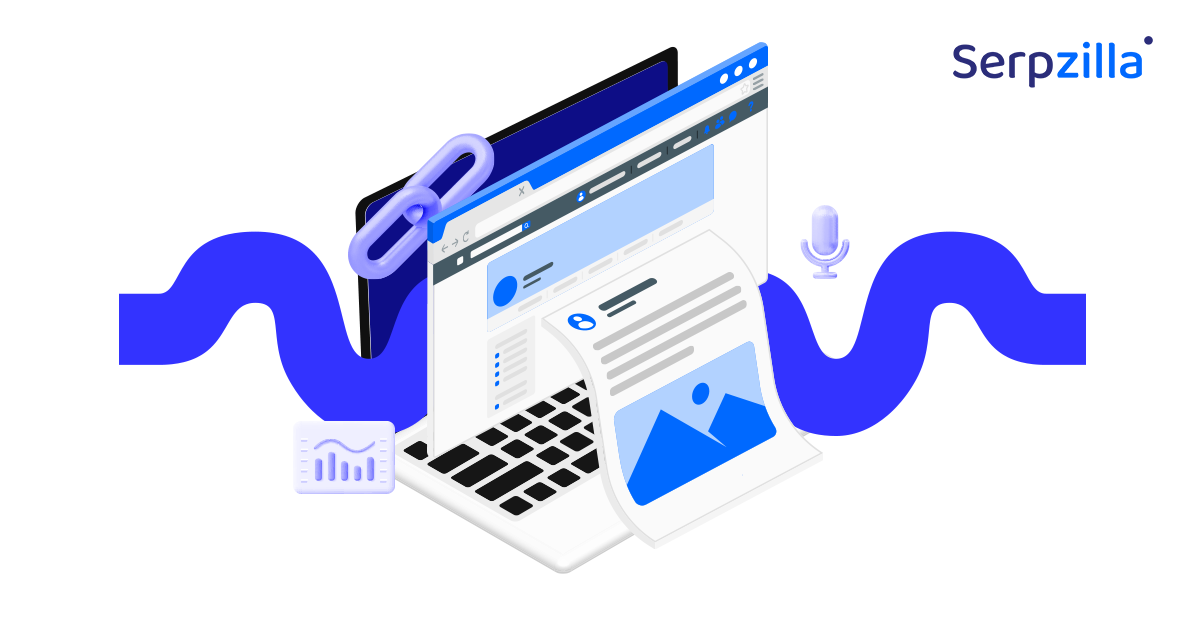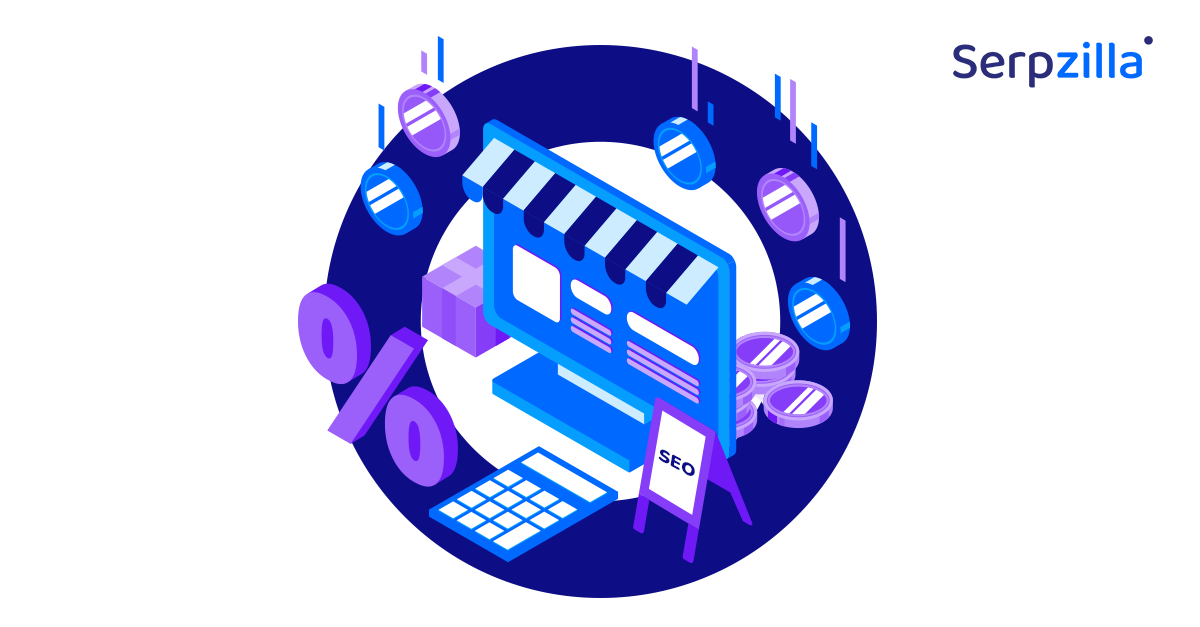All SEO activities can be split into two major groups:
- On-page SEO: every kind of optimization you do within your own site. Structuring, strategic content optimization, technical SEO, etc.
- Off-Page SEO: everything that happens outside of your site to improve its authority, relevance, and trustworthiness in the eyes of search engines. This includes link building, brand mentions, reviews, social signals, digital PR, and any external factors that influence your rankings and reputation.
Both these SEO aspects are equally important and highly interconnected. Neither will perform well if you neglect the other.
If on-page SEO is somewhat more straightforward, off-page SEO depends on a lot of external factors. Factors which constantly change. In 2026, when Google’s E-E-A-T defines successful SEO strategies, and ranking algorithms are getting ever tighter, off-page SEO is about building trust and raising brand awareness.
This article contains a comprehensive off page SEO checklist 2026 of best practices for your off-page SEO that will take you to the SERP top.
#1 Current Situation Analysis
✅ Backlink Audit
Why it matters:
Backlink Audit is an excellent way to see how your SEO strategy on the whole and link building in particular are performing here and now. Usually, it’s very demonstrative of your authority and the trust you have gained on the Internet, your visibility and ability to climb to the ranking top for key queries.
This is directly measurable through metrics like Domain Rating (DR), Domain Authority (DA), Trust Flow (TF), and spam scores.
Things to do:
- Analyze your overall backlink profile: check diversity of referring domains (ensure mix of different domain authorities, industries, geographies).
- Run spam score tests for all backlinks and flag/remove those with high spam scores (e.g., Moz Spam Score > 20%).
- Sort referring domains by authority (e.g., DA/DR) and review distribution:
Ideal ratio: ~30% high-authority (DA/DR 50+), ~50% medium authority (DA/DR 20–50), ~20% low authority (DA/DR <20) but relevant and natural sites.
- Check anchor text distribution for anchor over-optimization.
- Identify and document toxic backlinks for future disavowal, if needed.
Tools to Use:
- Ahrefs (Backlink Profile report, Domain Rating)
- Moz Link Explorer (Spam Score analysis)
- Semrush Backlink Audit
- Google Search Console (Links report)
- Majestic (Trust Flow/Citation Flow)
Example:
You discover 15% of your backlinks come from sites with Spam Score >30% and have overuse of exact-match anchors. You disavow the worst offenders, maintain a list of all links categorized by DA ranges, and plan a link-building campaign with Serpzilla to rent higher authority backlinks to quickly improve ratio balance.
✅ Target Pages
Why it matters:
Link building works best when directed at particular pages with consideration for user search intent. This becomes especially important with Google’s Muvera Update.
Things to do:
- Define pages on your site that are most likely to generate conversions or attract traffic (e.g., key service pages, lead magnets, cornerstone content).
- Check current rankings of these pages for target keywords (identify those ranking on pages 2–3 as “low-hanging fruit”).
- Mark pages where incremental ranking improvements can bring visible traffic increases.
- Match the pages content with particular user search intent and ensure your future backlinks also follow this logic.
- Map user intent-sensitive keywords to each target page to align anchor text strategy.
Tools to Use:
- Google Search Console (Performance report for URL-specific keyword ranking)
- Ahrefs (Top Pages report, Organic Keywords report)
- Semrush (Position Tracking)
- Google Analytics (landing page performance
Example:
You find that your “SEO consulting” service page ranks at position 13 for a high-value keyword but receives low traffic. You realize that it’s because the page is optimized for commercial intent (offering services), while the keyword primarily attracts informational searches (users looking for guidance or tutorials).You adjust your strategy by rewriting parts of the page to better match informational intent and plan backlinks from articles and guides rather than sales-oriented pages, ensuring external links reinforce this intent alignment.
✅ Competitor Backlink Analysis
Why it matters:
Analyzing your competitors’ backlinks can very clearly show you what they’re doing better or worse. Then you can apply their working tactics and avoid mistakes they make. Particularly, you can uncover backlink gaps and strategies you can replicate or improve upon. It’s measurable by comparing your referring domains and DR/DA profile to that of your top-ranking competitors.
Things to do:
- Check out 3–5 competitors currently ranking in the top positions for your target keywords.
- Analyze their backlink profiles: check referring domains, DR/DA of those domains, link sources (guest posts, niche edits, press mentions, etc.) and link type distribution.
- Detect patterns (e.g., most links come from niche blogs or media sites). This task is perfect for AI analysis.
- Find backlink gaps: quality domains linking to competitors but not to you.
- Replicate links from domains with high DR/DA, real traffic, and niche relevance.
- Examine successful anchor text strategies of competitors to adjust your own anchor planning.
Tools to Use:
- Ahrefs (Site Explorer, Link Intersect tool)
- Semrush (Backlink Gap tool)
- Majestic (Compare Tool)
- Moz Link Explorer (Competitor comparison)
Example:
You analyze the backlink profiles of your top 3 competitors and discover they all have multiple links from authoritative marketing blogs that review SEO tools, but your site lacks presence there.Additionally, their anchor text is predominantly branded or informational, while yours is overly commercial. You find the same and similar blogs in Serpzilla’s database, adjust your anchor strategy, and acquire several rented links from them.
✅ Anchor Map
Why it matters:
Anchor text distribution is one of the important factors which affect how search engines interpret the topical relevance of your backlinks. Over-optimization can mean penalties. A natural, diversified anchor profile improves rankings safely. Again, this is particularly important in a post-Muvera environment where semantic context matters more than ever.
Things to do:
- Check your ratios of exact-match, partial-match, branded, generic, and naked URL anchors.
- Compare your anchor distribution against successful competitors in your niche to understand “natural” ratios for your industry.
- Plan anchor text usage in upcoming link building campaigns to maintain balance:
- ~30–40% branded anchors (e.g., Serpzilla, Serpzilla platform)
- ~30% generic/natural anchors (e.g., click here, learn more)
- ~20% partial-match anchors (e.g., best SEO tools for 2025)
- <10% exact-match commercial anchors (e.g., buy backlinks online)
- ~30–40% branded anchors (e.g., Serpzilla, Serpzilla platform)
- Document this plan in an anchor map spreadsheet, linking anchor types to specific target pages and keywords.
- Regularly review and adjust the anchor map as your backlink profile evolves.
Tools to Use:
- Ahrefs (Anchor Text report)
- Semrush (Backlink Audit > Anchors tab)
- Google Search Console (Links report > Top linking text)
Excel or Google Sheets for planning and tracking the anchor map.
Example:
You audit your current anchor profile and find that 50% of anchors pointing to your “SEO consulting” page are exact-match commercial terms. Meanwhile, top competitors’ profiles show only ~10% exact-match anchors and far more branded or generic anchors. You revise your strategy: future links to this page will display branded and partial-match anchors.
✅ Link Velocity
Why it matters:
Link velocity is how quickly your site gains or loses backlinks over time. The more recent consensus is that link velocity doesn’t directly affect SEO because of its unpredictable nature. For instance, if your post goes viral and becomes widely shared everywhere, your link velocity soars, but Google will not pick it up as a spammy activity.
Of course, it doesn’t mean that you should completely overlook your link velocity. Here are some guidelines from our experts you can follow.
Things to do:
- Measure current velocity: Use Ahrefs or Semrush to chart monthly referring domains gained vs. lost.
- Baseline: Calculate average gain (e.g., (+50 new − 10 lost) = +40 domains/month).
- Compare with your competitors: Grab link velocity data for top-ranking sites in your niche to understand normal growth ranges.
- Create a growth plan: Define a staged approach:
- Month 1: +10 referring domains
- Month 2: +15–20
- Month 3+: +20–30
- Month 1: +10 referring domains
- Smooth the curve: After a campaign spike, plan follow-up links to prevent “spiky” patterns.
- Monitor losses: Track lost referring domains and investigate causes: perhaps due to removed content or deindexation.
Tools to Use:
- Ahrefs (Referring domains → New & Lost graph)
- Semrush (Backlink Analytics, Referring Domains over time)
- Google Sheets or Excel (to calculate velocity and chart trends)
Example:
You notice your site averaged +10 new referring domains/month, but after a product launch, you got +60 the first month, then +5 the next. To normalize, you plan to purchase a few guest posts from Serpzilla.
✅ Link Building KPIs
Why it matters:
Without clear KPIs, link building campaigns can become unfocused and their effect difficult to evaluate. It’s always good to measure success in tangible ways. This way, you can tie off-page SEO efforts to real business outcomes like improved rankings, authority, and traffic. And justify marketing budgets to scale up easier.
Things to do:
- Define measurable KPIs aligned with business goals: Examples include:
- Number of quality referring domains acquired monthly.
- Improvement in DR/DA over a period (e.g., +10 DR in 6 months).
- Ranking improvements for priority keywords.
- Growth in organic traffic to target pages.
- Number of quality referring domains acquired monthly.
- Benchmark: Use historical data from your site and competitors to set realistic targets.
- Segment KPIs by tactic: e.g., KPIs for guest posting vs. niche edits vs. crowd links.
- Set checkpoints: Regularly review progress (monthly or quarterly) and adjust targets as needed.
- Report clearly: Document all KPIs and progress in a shared report/dashboard.
Tools to Use:
- Ahrefs (Domain Rating, Referring Domains)
- Semrush (Position Tracking, Domain Authority metrics)
- Google Analytics (Organic traffic by landing page)
- Google Search Console (Ranking positions)
Example:
You establish KPIs for a 6-month campaign:
- Acquire 100 new referring domains (average +16/month).
- Improve Domain Rating from 35 to 45.
- Rank top 5 for “SEO platform for SMBs.”
Increase organic traffic to your “SEO consulting” page by 25%.
You track progress monthly using Ahrefs and Search Console, adjusting tactics when targets lag behind.
#2 Backlink Tactics
✅ Guest Posts
Why it matters:
Guest posting is one of the safest and most effective link building tactics. It earns contextual, editorially placed links. Niche blogs that accept guest posts can have a high DA/DR score even without boasting huge traffic or being Forbes, just because they are highly trusted and respected in a narrow niche. This makes them affordable referring domain prospects.
Things to do:
- Identify niche-relevant blogs that accept guest poses: Prioritize sites with DR/DA >30, real organic traffic, and editorial standards. Use Serpzilla’s Smart Search to fine-tune your matching criteria.
- Vet sites carefully: Check that the site has fresh content, real engagement.
- Pitch original, high-value articles tailored to each publication’s audience.
- Automate article publication and managing with Serpzilla: Save time on routine work to focus on quality content creation.
- Use varied anchors: Align with your anchor map strategy (branded, generic, partial-match).
- Track published posts: Use Serpzilla’s dashboard to track your guest post backlink performance and quickly adjust your guest posting campaign.
Tools to Use:
- Serpzilla (for finding pre-vetted guest post opportunities, outreach, guest post placement and management)
Serpzilla can be your all-in-one go-to tool when it comes to everything guest posting. It offers an extensive database and 40+ filters which will allow you to find blogs best matched for your content.
It also automates all the managerial tasks, so you will never lose an outreach email answer.
With Serpzilla, guest posting comes full circle, from comprehensive blog search, to monitoring and adjustment of published quest posts.
Example:
You identify 10 reputable marketing blogs from Serpzilla’s database, with DR 40–70, accepting guest posts. You pitch custom article ideas and agree on terms. You publish articles with branded and partial-match anchors pointing to your SEO guide. These contextual links drive referral traffic and help improve ranking for your target page.
✅ Niche Edits
Why it matters:
Niche edits (also called link insertions) involve adding your link to existing, already-indexed content on relevant, authoritative sites. This tactic utilizes the trust and history of evergreen content that was published some time ago.
Things to do:
- Find niche-relevant articles on Serpzilla that are already ranking or indexed: Look for content where your link would add value and fit naturally.
- Analyze page context and anchor variants: Choose anchor text that aligns with your anchor map and user search intent.
- Place your backlink using Serpzilla link insertions feature.
- Track placements: Record URL, page topic, anchor used, and DR of the referring page.
Tools to Use:
- Serpzilla (for quick access to vetted opportunities for link insertions)
Sepzilla is excellent for finding existing high-ranking pages and matching them contextually with your content. It also gives you full control over the link placement, allowing you to use your own anchor text and placement context.
Example:
You identify a well-ranked article on “SEO tools for small businesses” with DR 55 and consistent organic traffic through search of Serpzilla database and place your backlink contextually. This niche edit adds authority quickly and reinforces your topical relevance for small-business SEO keywords.
✅ Crowd Links
Why it matters:
Crowd links (links placed in forum discussions, blog comments, Q&A sites like Quora, Reddit, etc.) help diversify your backlink profile and improve brand awareness. These are typically nofollow links. However, they drive referral traffic and enhance topical authority. They also send natural link signals and balance out your off-page SEO strategy.
Things to do:
- Identify niche-relevant, active platforms: Forums, communities, and discussion platforms where your target audience participates.
- Analyze thread activity and moderation policies: You don’t want to get banned for breaking the link posting rules.
- Participate genuinely: Share helpful, non-promotional answers that build reputation first; drop links only when contextually relevant.
- Monitor engagement: Track which platforms and posts generate discussion, clicks, or follow-up opportunities.
Tools to Use:
- Google search (e.g., “[niche] forum”, site:reddit.com [topic])
- Ahrefs (Referring Domains report to see where competitors get crowd links)
Example:
You find an active Reddit thread discussing “best SEO tools for startups” and contribute a detailed, helpful comment. Within this comment, you naturally mention your article on SEO for new sites and include a link. The post earns several upvotes and drives niche-targeted referral traffic while building your brand’s reputation in that community.
✅ Business Listings & Review Sites
Why it matters:
Listings on reputable business directories and review platforms (like Google Business Profile, Trustpilot, Yelp) help with local SEO and contribute to trust signals that Google evaluates under E-E-A-T.
Things to do:
- Find authoritative directories and review platforms relevant to your niche and geography: Examples: GMB for local businesses, industry-specific directories, Trustpilot for SaaS, etc.
- Ensure consistent NAP (Name, Address, Phone) details across all listings.
- Add business descriptions, categories, and links back to your site on every listing.
- Stimulate customers to leave reviews on these platforms: for instance, you can provide discounts for a proven review on Google maps.
- Monitor and update listings regularly: Ensure info stays current (e.g., address, working hours, URLs).
Tools to Use:
- Google Business Profile Manager
- Moz Local (for citation management)
- Trustpilot / Yelp / niche-specific platforms
Example:
You audit your online presence and find your company isn’t listed on Capterra, a popular SaaS review site where competitors are visible. You create a profile, add business details and backlinks, and begin requesting reviews from happy customers.
✅ Press Releases
Why it matters:
Websites that publish press-releases on a regular basis fall in line with Google’s priority for the freshness of content. Regular publishing of news also builds trust and creates traceable Internet history.
Things to do:
- Pick genuine, newsworthy events or announcements: New product launches, partnerships, milestones, research findings, etc.
- Write a professional press release with a clear structure.
- Distributed via reputable PR distribution networks or direct media outreach: Serpzilla can be an excellent source when you need to find highly relevant websites which can publish your press release.
- Monitor press pickup and track referring domains.
Tools to Use:
- Serpzilla (for identifying and securing placements in niche media outlets)
- Google Alerts (for monitoring coverage)
Example:
You announce your new SEO audit tool via a professional press release and distribute it through Serpzilla. The release gets picked up by several niche marketing news sites (DR 60+), earning contextual branded backlinks and a spike in referral traffic from marketers and agencies reading the articles.
#3 Link Building Workflow
✅ Referring Domain Database
Why it matters:
A curated list of high-quality websites for potential link placement is something you need to compile and maintain. With Muvera Update, one of the effective link building tactics would be creating topic clusters with backlinks across multiple interlinked content pieces.
Things to do:
- Define your selection criteria: Example filters – Domain Rating (DR) >30, organic traffic >500/month, relevant topical categories, low spam score.
- Build a list of potential referring websites vetted manually or using trusted databases like Serpzilla.
- Segment donors by type (blogs, news sites, directories, etc.) and niche relevance.
- Build topic clusters over a period of time.
Tools to Use:
Serpzilla (for browsing pre-vetted potential referring domains using 40+ filters and creating topic clusters)
Example:
A guest post with a specific topic you published performs well. Using Serpzilla’s Smart Search, you create a list of sites where you can place your backlink within a similar content and go on with a series of guest posts, creating a topic cluster where every published piece of content supports all others contextually.
✅ Build Calendar
Why it matters:
A link-building calendar makes your link building workflow predictable. It helps you to acquire links at a consistent, natural pace. It prevents chaotic link bursts that could raise red flags with Google and helps you to plan resources effectively.
Things to do:
- Check baseline link velocity and competitor patterns: Understand your current acquisition rate and what’s typical for your niche.
- Organize a calendar of your link building: Define how many links you want to get each week/month and from which sources (e.g., 3 guest posts, 5 niche edits, 10 crowd links monthly).
- Align link building activities with business milestones and seasonal trends (e.g., product launches, high or slow season).
- Keep all planned activities in a shared calendar shared with your team.
Tools to Use:
- Google Calendar or project management tools (e.g., Trello, Asana) for scheduling
- Excel/Google Sheets (for overview and tracking)
- Serpzilla (for planning volume and pacing of outreach and placements)
Example:
You build a quarterly link acquisition plan:
- Month 1: 3 guest posts, 2 niche edits, 5 crowd links
- Month 2: 4 guest posts, 3 niche edits, 5 crowd links
- Month 3: 5 guest posts, 3 niche edits, 4 crowd links
With addition of natural links from your content marketing, this becomes a great addition to your backlink profile: no spikes, matches competitor velocity and keeps campaigns organized.
✅ Link Mix
Why it matters:
If you want your backlink profile to look natural to Google, your links need to come from various places. They also have to be of different types: dofollow, nofollow, sponsored, UGC.
Things to do:
- Audit your current link type distribution: find any imbalances (e.g., dofollow links where they are clearly sponsored).
- Aim for a realistic ratio: e.g., ~60% dofollow, 30% nofollow, 5% sponsored, 5% UGC (adjust according to your niche).
- Review competitor link profiles for benchmarking.
Tools to Use:
- Ahrefs (Backlink report > Link attributes filter)
- Semrush (Backlink audit > Link attributes)
Example:
Your audit reveals 95% of your links are dofollow, even if they are clearly sponsored. You adjust your strategy to actively acquire nofollow crowd links and sponsored mentions, bringing your profile closer to a natural distribution seen among top competitors.
✅ Link Sheet
Why it matters:
You will be dealing with a large array of data such as links, metrics, dates. It is absolutely essential that you keep it well organized and accessible for editing and analysis. The best way is to keep a spreadsheet.
Things to do:
- Maintain a spreadsheet documenting each acquired link: URL, referring domain DR, anchor text, target page, date, and link type. Feel free to add more attributes.
- Update regularly as links are built, removed, or changed. Being able to look at the changes over time is an excellent source of ideas for strategy adjustment.
- Flag issues (e.g., non-indexed links, removed links).
Tools to Use:
- Google Sheets / Excel
- Ahrefs (for verifying live links and DR)
- Google Search Console (for top linking sites)
Example:
You track 200 links with filters for anchor type and link type. When a referring page updates the source content and changes the anchor text of the link, you spot it quickly and can address the issue.
✅ Index Check
Why it matters:
A backlink has no SEO value if Google hasn’t indexed the page it’s on.
Things to do:
- Regularly verify whether referring pages with your links are indexed (using “site:” search or tools).
- If not indexed, request indexing via Google Search Console or encourage indexing through sitemap submission and internal linking.
- Prioritize indexing for high-DR placements.
Tools to Use:
- Google Search (site:[URL])
- Ahrefs (URL indexing status)
- Google Search Console (URL inspection tool)
Example:
You check and find 10% of recent niche edits are not indexed. You submit them manually in the Search Console to get them indexed and fully counted.
#4 Brand Mentions & Trust Signals
✅ Brand Monitoring
Why it matters:
You need to know in what context your brand name appears online. Is it positive or negative in which case you can address the issue? Do they provide a link or just mention you and you can reach out and ask to add a link?
Things to do:
- Set up alerts for brand name variations.
- Monitor competitors too for insight.
- Use this data to identify unlinked mentions for outreach.
Tools to Use:
- Google Alerts
- BrandMentions / Mention
- Ahrefs (Content Explorer for mentions)
Example:
You find a negative review with your brand name through Google Alerts. You reply to a review and offer a solution. The customer is happy with how you handled the issue and leaves positive feedback as well.
✅ Link Reclamation
Why it matters:
Turning unlinked mentions into backlinks is an efficient, low-friction tactic for earning high-quality links.
Things to do:
- Scan the web for unlinked brand mentions.
- Prioritize relevant, authoritative sites.
- Reach out with a polite, personalized request to add your link.
Tools to Use:
- Ahrefs (Content Explorer + “highlight unlinked domains”)
- Google Alerts
- Semrush (Brand Monitoring)
Example:
You find a positive review of your services without a link. A quick email results in a new branded backlink from a DR 60 site.
✅ Trusted Listings
Why it matters:
Presence on reputable directories helps you to build audience loyalty, creates E-E-A-T signals and helps rank much higher for branded keywords.
Things to do:
- Identify top industry directories and platforms.
- Ensure consistent NAP (name, address and phone) info everywhere.
- Regularly update listings.
Tools to Use:
- Moz Local
- Ahrefs (check competitors’ citations)
- Google My Business Profile
Example:
You list your business on Capterra and G2, improving authority and visibility for software-related branded searches.
✅ Review Platforms
Why it matters:
Many serious review aggregators authenticate reviews so that users know they are real. This helps to win user trust and is great if you want to improve your E-E-A-T.
Things to do:
- Claim your profiles on key review sites.
- Actively encourage satisfied customers to leave reviews.
- Respond to reviews to show engagement.
- Offer discounts or freebies in exchange for reviews to motivate your users.
Tools to Use:
- Trustpilot
- Google Business Profile
- Niche-specific review platforms
Example:
You notice competitors have recent Trustpilot reviews, while yours are outdated. You launch a review request campaign and gain 20 new reviews in 2 months.
#5 Digital PR и E-E-A-T
✅ Story Hooks
Why it matters:
Unique, newsworthy content plays an increasingly important role in all SEO and the basis for content marketing and context-oriented link building.
Things to do:
- Develop compelling angles: case studies, data, trends, industry research.
- Align your story hooks with niche interests and current events.
- Package them for easy media use (quotes, stats, infographics, checklists).
Tools to Use:
- BuzzSumo (to find trending topics)
- Google Trends
- Ahrefs Content Explorer
Example:
You publish “SEO Trends 2025” with proprietary data from your own research, attracting links from several industry publications.
✅ Expert Outreach
Why it matters:
Continuously published expert commentary is an excellent E-E-A-T signal. It isn’t just good for your SEO, it helps you build a loyal community and establish your brand as a leading expert in your niche.
Things to do:
- Register on platforms like HARO, Qwoted, Help a B2B Writer.
- Respond quickly with valuable insights.
- Build media relationships for recurring opportunities.
Tools to Use:
- HARO, Qwoted, Terkel
- Google Alerts (for journalist requests)
- Outreach tools for follow-ups
Example:
You respond to a HARO query for very specific data that you happen to have and get quoted (with a link) in a high-DR marketing site.
✅ Niche Roundups
Why it matters:
“Top 10” and “Best of” lists earn links and rank well themselves.
Things to do:
- Find roundup opportunities in your niche.
- Pitch inclusion with relevant value proposition.
- Offer assets (logos, testimonials) to ease editor work.
Tools to Use:
- Google search (“best [niche tools]”)
- Ahrefs (Content Explorer for roundup articles)
- Email outreach tools
Example:
You pitch your SEO tool for inclusion in a “Top SEO Software” list and secure a DR 70 backlink.
✅ Contextual Trust Links
Why it matters:
Links to trust-building pages (“About Us,” “Reviews,” etc.) strengthen E-E-A-T signals and improve semantic relevance.
Things to do:
- Ensure external content linking to you also references trust pages where appropriate.
- Provide these URLs when pitching guest posts or PR opportunities.
- Vary link destinations beyond just commercial pages.
Tools to Use:
- Ahrefs (to check where trust pages are linked externally)
- Google Analytics (for trust page referral traffic)
Example:
You publish a guest post that links to both your “SEO Services” page and your “About Us” page, enhancing credibility signals for readers and Google.
#6 Crowd Marketing
✅ Community Targeting
Why it matters:
A small, but engaged and loyal following can bring you more leads, recurring customers and backlinks than a ten times larger one, but passive and segmented one.
Things to do:
- Identify forums, Reddit subs, Quora topics, social groups with your target audience.
- Analyze activity and moderation levels.
- Prioritize communities with active, real engagement.
Tools to Use:
- Google search ([niche] forum, site:reddit.com [topic])
- Ahrefs (Referring domains > forum links)
- Semrush (backlink source analysis)
Example:
You identify 3 active SEO forums and plan to participate weekly, interact with other participants, start discussions, share knowledge.
✅ Aged Accounts Only
Why it matters:
Posts from trusted, aged accounts with a transparent posting history are more credible and less likely to be flagged as spam.
Things to do:
- Use or build accounts with posting history and positive reputation.
- Avoid newly created accounts for promotional posts.
Tools to Use:
- Native platform analytics (Reddit karma, forum join dates)
- Manual vetting
Example:
You post from a 2-year-old Reddit account with good karma and are developing several other accounts to start posting when they gain enough karma and posting history.
✅ Native Content Plan
Why it matters:
Your community work should be systemic, you need to translate consistent opinions, views and values. It’s easy to overlook, with so many other SEO activities, so you need a plan to stick to.
Things to do:
- Develop a content calendar for forums/communities.
- Write useful posts that naturally include mentions/links.
- Avoid repetitive or template-style messaging.
Tools to Use:
- Google Sheets (calendar and post planning)
- Notion/Trello (content task management)
Example:
You plan 3 weekly posts on Quora answering common SEO questions, mentioning your guide when relevant.
✅ Natural Link Drop
Why it matters:
Forced links dropped across forum threads have been a SEO meme for a long time now. But there really is a thin line between forced and natural, and in this case, it’s always better to err on the side of caution.
Things to do:
- Only add links where directly helpful.
- Use varied anchor text and placement, avoiding direct matches.
- Ensure your link adds value to the discussion.
Tools to Use:
- Manual review of posts
- Ahrefs (track referring domains from crowd links)
Example:
You add a link to your SEO checklist in response to a detailed forum question on link audits.
✅ Engagement Monitoring
Why it matters:
Community engagement is one of the most volatile metrics. It can quickly lift you up or ruin your community profile if your post gets picked up in a negative way. Community engagement needs to be monitored very closely so that you can act quickly if you need to.
Things to do:
- Track likes, replies, upvotes, views.
- Adjust strategy if posts fail to generate engagement or create negative responses.
- Prioritize platforms where your content performs best.
Tools to Use:
- Native platform analytics (Reddit, Quora stats)
- Google Analytics (for referral traffic from communities)
Example:
You notice Reddit posts generate far more traffic than forum comments, so you shift focus there.
#7 Link Building Performance
✅ Authority Tracking
Why it matters:
DR/DA metrics influence almost every aspect of your SEO, from SERP rankings to how successfully you can monetize your traffic. Tracking authority metrics shows whether your link-building efforts are improving your site’s perceived trust and authority.
Things to do:
- Monitor DR, UR (Ahrefs) or DA, PA (Moz) regularly.
- Track Trust Flow/Citation Flow (Majestic) for additional signals.
- Check link velocity trends alongside authority changes to find correlations.
Tools to Use:
- Ahrefs (Site Explorer)
- Moz Link Explorer
- Majestic
Example:
After 3 months of link building campaign, your DR grows from 35 to 42, a clear authority improvement.
✅ Traffic & Ranking Impact
Why it matters:
The ultimate goal of link building is improved traffic volume (both organic and referral) and SERP rankings.
Things to do:
- Track target page positions for priority keywords.
- Measure organic and referral traffic growth for linked pages.
- Attribute ranking jumps to specific link campaigns where possible.
Tools to Use:
- Google Search Console (Performance report)
- Ahrefs (Position tracking)
- Google Analytics (landing page traffic)
Example:
Your SEO checklist page moves from position 11 to 5 and sees a 30% traffic increase after earning 10 contextual links.
✅ SERP Visibility Boost
Why it matters:
Increased trust from link building can trigger additional SERP features (site links, Knowledge Panels). You can also appear in Google AI overview, if you rank high enough.
Things to do:
- Monitor branded search results for new SERP features.
- Check for appearance of site links and “About this result” info.
- Record changes after major link-building milestones.
Tools to Use:
- Google search (manual checks)
- Ahrefs (Rank Tracker for SERP features)
- SEO tools like SERPWatcher
Example:
After improving authority, your branded search shows site links and an “About this result” disclosure.
✅ Link Sheet Updates
Why it matters:
Like we’ve already mentioned, your backlink profile is affected by very many external factors which makes it shift regularly. If you maintain a spreadsheet with your backlink database and update this data regularly, it becomes a crucial data source. Without it, your efforts may be simply ruined by chaos.
Things to do:
- Log new links as they go live.
- Flag lost/removed links and plan replacement outreach.
- Track indexation status.
Tools to Use:
- Google Sheets
- Ahrefs (Lost backlinks report)
- Google Search Console
Example:
Your work schedule included recurring weekly tasks to check and update your backlink database which help you track the slightest changes and predict trends.
Best Tools for Off-page SEO
| Tool Name | What to Use For | Price |
| Serpzilla | Link building management: guest posts, niche edits, press releases, outreach tools, backlink performance monitoring | Free to use, pay for links only |
| Ahrefs | Backlink analysis, competitor analysis, anchor map, authority tracking | From $99/month |
| Semrush | Backlink audits, link velocity tracking, brand monitoring, position tracking | From $129.95/month |
| Moz Pro | Spam score analysis, domain authority checks, citation management | From $99/month |
| Majestic | Trust Flow, Citation Flow, backlink history analysis | From $63/month |
| Google Search Console | Free backlink data, indexing status, performance tracking | Free |
| Google Alerts | Brand mention monitoring | Free |
| BrandMentions | Real-time monitoring of brand mentions and unlinked citations | From $99/month |
| BuzzSumo | Finding trending topics, story hooks for digital PR | From $119/month |
| Trustpilot | Review platform management and reputation building | Free basic plan; paid plans available |
Off-Page SEO Checklist
SEO does not tolerate chaos. Creating a clear workflow and strategy will take you half-way to your desired SEO goals. Serpzilla experts are here to help you with advice and working tactics.
We have compiled an Off-page SEO checklist which you can download and use for daily reference. Check it out here:








